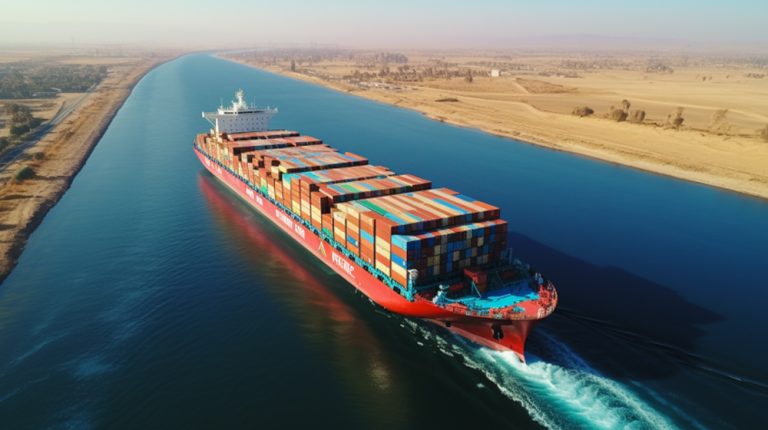Pakistan’s economic growth is expected to moderate considerably during the financial year 2022-23 (FY23), said the State Bank of Pakistan (SBP) in its annual State of Pakistan’s Economy report.
Taking into account the destruction caused by floods and the policy focus on stabilization, the SBP projects real GDP growth below the previously announced range of 3-4 percent for FY23.
The demand compression measures introduced by the government and the SBP have started to cool down the overheated economy in the initial months of FY23, the report notes.
Private Consumption Pivotal to GDP Expansion
Pakistan’s real GDP growth reached around 6 percent in FY22. The growth was broad-based as both agriculture and industry saw a notable increase that spilled over to the services sector as well. Large-scale manufacturing (LSM), in particular, showed a double-digit increase. Private consumption mainly drove the expansion in GDP, while investment rose marginally.
The continued reliance on consumption as an engine of growth amid sluggish improvement in productivity once again left the country vulnerable to adverse developments in the global economy. Hence, a combination of adverse global and domestic developments marred the country’s economic performance, leading to the reemergence of macroeconomic imbalances during FY22.
Flood Aftershocks Pose a Threat
The economy was already in a stabilization phase when wide-scale flooding hit a large part of the country at the start of FY23. The flooding in FY23 is likely to impinge on the country’s real economic activity through various channels. Specifically, the losses in agriculture emerging from the damages to crops and livestock are likely to transmit to the rest of the economy through various backward and forward linkages, the report added.
Similarly, the wide-scale destruction of infrastructure in the affected provinces may also undermine the country’s growth prospects during the year. On the other hand, continuing the policy efforts to arrest demand pressures, the government and the SBP announced further corrective measures in the ongoing year. These included:
- temporarily halting fresh disbursements under the schemes of Mera Pakistan Mera Ghar (MPMG) and Kamyab Jawan Youth Entrepreneurship for revisiting it later (KJYE)
- imposition of additional import duties on various categories including steel, food preparations, and transport
- restoration of fuel taxation
- introduction of temporary restrictions on certain imports
- a further 125 bps increase in the policy rate in July 2022, and
- linking markup rates on EFS and LTFF loans with policy rates
These measures, together with the lagged impact of a 675 bps hike in policy rate and other demand management measures announced in FY22, and the government decision to unwind the fiscal package for fuel and electricity subsidies towards the end of FY22 are likely to slow the momentum of economic activity during FY23.
Inflation to Exceed Previous Estimate
Taking into account the destruction caused by floods and the policy focus on stabilization, the SBP projects real GDP growth below the previously announced range of 3-4 percent for FY23. The NCPI inflation is expected to rise above the previously announced range of 18-20 percent during FY23.
Supply shocks in the form of the rollback of energy subsidies and resumption of fuel taxation and losses to agricultural production caused by floods are likely to influence the inflation trajectory during the year. The elimination of subsidies and increase in fuel taxation triggered a sharp increase in inflation since June] 2022, and the trend is likely to persist in FY23.
Similarly, the supply shortages of perishable food commodities stemming from floods is expected to add further stimulus to prices. On the other hand, the stabilization policies introduced last year and flood-induced losses to incomes may suppress the magnitude of demand-pull inflation during the year.
Target for Fiscal Deficit
The government has targeted to reduce the fiscal deficit to 4.9 percent of GDP in FY23 from 7.9 percent in FY22. This outcome would be achieved through both revenue and expenditure measures. Widening of the tax base through the elimination of exemptions, increase in tax rates, and reinstatement of fuel taxes are expected to boost tax receipts during FY23.
The non-tax revenues will also recover with the re-imposition of PDL. On the expenditure side, the rationalization of subsidies is likely to keep current spending under check. However, the government has envisaged an increase in social protection grants under BISP, because of an increase in the amount of stipend and extension in the coverage of beneficiaries.
Similarly, the relief and rehabilitation efforts in flood-affected regions may also raise spending needs during the year. The containment in the pace of non-priority current spending and increase in revenue collection may provide fiscal space to expand the volume of development spending during FY23. The coordinated fiscal and monetary policy stance is likely to reduce external account pressures in FY23.
Target for Current Account
The SBP projects CAD to fall below last year’s level of 4.6 percent of GDP in FY23. This improvement would be driven by a sizeable contraction in import growth. As evident from the YoY declines in imports since July 2022, a range of demand compression measures introduced since last year, has succeeded in trimming the growth momentum of imports.
Likewise, global commodity prices have also started to soften after reaching multiyear peaks in FY22, which will reduce the pressure caused by a large price impact. However, the losses to agricultural produce, induced by the recent floods, are likely to step up the import of agricultural commodities, particularly cotton.
On the other hand, the slowdown in global demand may also weaken the growth in exports during FY23, and policy tightening in advanced economies would dampen the prospects of capital flows to emerging and developing economies.
Remittances, IMF, Forex Outlook
The workers’ remittances after witnessing a spike in FY21 appear to have plateaued in FY22 and are likely to remain at around a similar level in FY23. The windfall gain from oil prices in GCC countries offers an upside risk to this projection. Moreover, with the resumption of the IMF program, the outlook of financial accounts has also improved.
Alongside the IMF program disbursements, the country is expected to receive external financing from multilateral and bilateral creditors that will considerably strengthen FX reserves position during FY23, the report added.

Follow ProPakistani on Google News & scroll through your favourite content faster!
Support independent journalism
If you want to join us in our mission to share independent, global journalism to the world, we’d love to have you on our side. If you can, please support us on a monthly basis. It takes less than a minute to set up, and you can rest assured that you’re making a big impact every single month in support of open, independent journalism. Thank you.

























